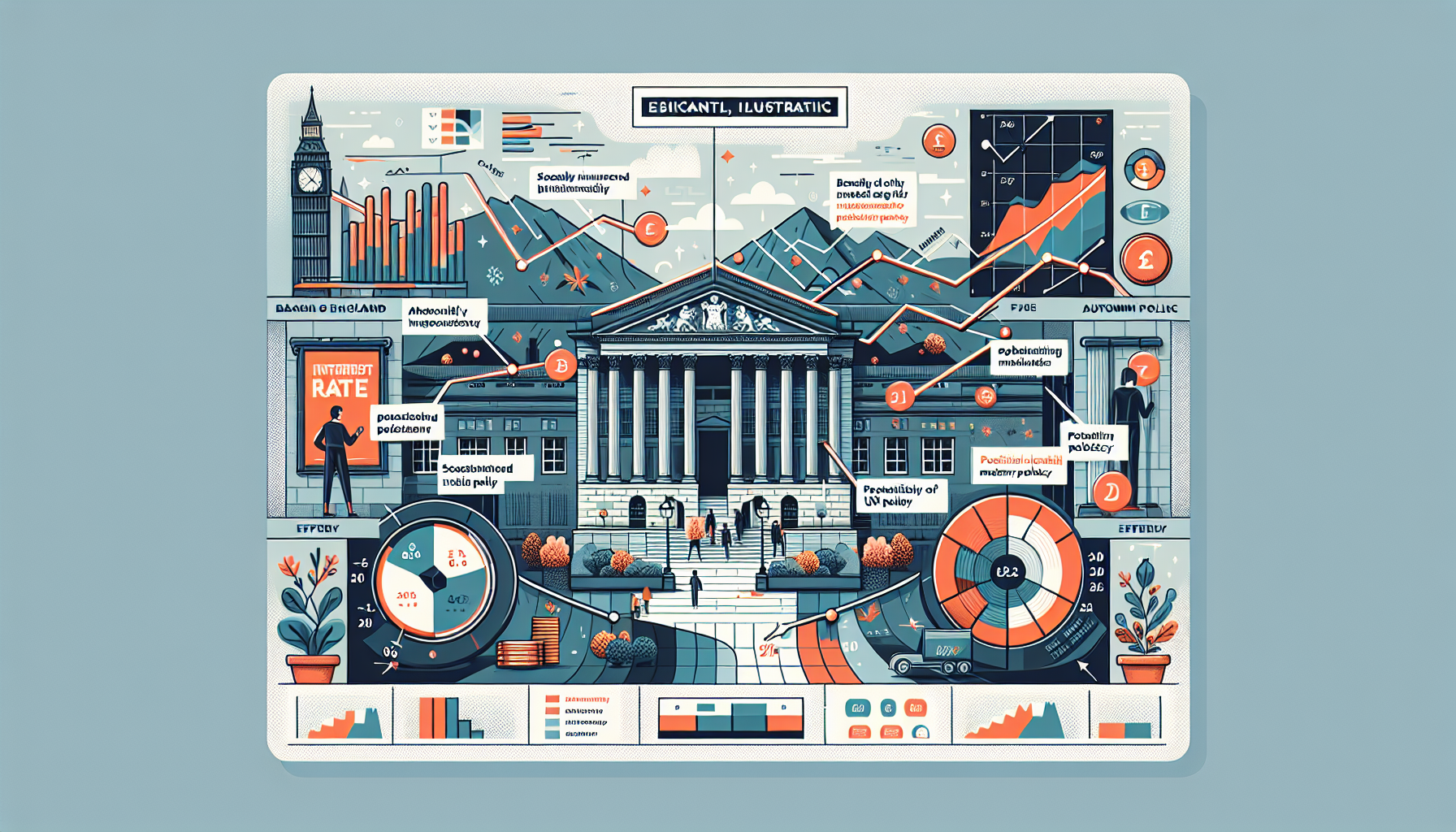The Bank of England's High-Stakes Dilemma: To Cut or Not to Cut?
The financial world holds its breath as the Bank of England (BoE) prepares for one of its most consequential Monetary Policy Committee (MPC) meetings in recent memory. The decision on whether to adjust the UK's key interest rate is always a delicate balancing act, but the current economic climate, shadowed by an imminent Autumn Budget, has injected an unprecedented level of uncertainty into the proceedings. Analysts and investors are deeply divided, with consensus fracturing under the weight of conflicting economic signals. This isn't merely a debate about a quarter-point change; it's a pivotal moment that could define the UK's economic trajectory for the coming year, influencing everything from mortgage costs and business investment to the strength of the Pound Sterling.
The Precarious State of UK Monetary Policy
At the heart of the debate is the BoE's Bank Rate, currently anchored at a 15-year high of 4%. For over a year, the central bank has wielded this powerful tool in a relentless campaign to subdue inflation. The question now is whether the battle is won or if a premature retreat could see the enemy regroup. The MPC's nine members are tasked with navigating this narrow path, weighing the risks of acting too soon against the dangers of acting too late. The very fact that a rate cut is a topic of serious discussion marks a significant shift from the previous "higher for longer" rhetoric, signaling that a new phase of the economic cycle may be upon us.
The Case for Holding Steady: A Cautious Central Bank
The majority of economists still lean towards a "hold" decision, and their reasoning is rooted in a deep-seated institutional caution. The BoE's primary mandate is price stability, and the memory of inflation soaring into double digits remains fresh. While the headline Consumer Price Index (CPI) has fallen dramatically from its peak, it remains stubbornly above the Bank's 2% target. Core inflation, which strips out volatile food and energy prices, is a particular point of concern, as it is seen as a better indicator of underlying domestic price pressures. The MPC will be keen to see several more months of conclusive data confirming that inflationary pressures are truly defeated before committing to a loosening cycle.

The Argument for a Surprise Cut: Getting Ahead of the Curve
In a surprising twist, several major financial institutions, including Barclays and Nomura, are forecasting a potential rate cut to 3.75%. This dissenting view is built on a more pessimistic reading of the UK's growth prospects. Recent labour market data has shown signs of softening, with unemployment ticking up and wage growth, while still robust, beginning to cool. Proponents of a cut argue that the BoE has already done enough to tame inflation and that keeping policy too restrictive for too long risks unnecessarily stifling the economy, potentially triggering a recession. For them, a pre-emptive cut is a necessary insurance policy against a more severe economic downturn.
The Inflation Conundrum: A Battle Half-Won?
The official inflation rate holding at 3.8% for the third consecutive month presents a complex puzzle. On one hand, it represents a monumental improvement from the crisis levels of 2022. On the other, the stagnation well above target is a red flag for hawkish MPC members. They fear that declaring victory too early could lead to a resurgence in price growth, forcing the Bank to reverse course and hike rates again—a scenario that would severely damage its credibility. The Bank will be scrutinizing data on services inflation and private sector pay growth with intense focus, as these are the areas most indicative of persistent, domestically-generated inflation.
The Looming Shadow: Chancellor Reeves's Autumn Budget
Complicating the BoE's decision is the political elephant in the room: the upcoming Autumn Budget scheduled for November 26th. Chancellor Rachel Reeves is widely expected to announce significant fiscal tightening, potentially including tax rises, to address a substantial fiscal shortfall. This creates a unique interdependency between monetary and fiscal policy. A contractionary budget that raises taxes would, in effect, do some of the BoE's work for it by dampening consumer demand and cooling the economy, thereby exerting downward pressure on inflation.
This presents the MPC with a strategic choice. Does it act now based on current data, or does it pause, waiting to see the precise impact of the government's fiscal measures? Many analysts believe the prudent course is to wait. By holding rates in November, the BoE can assess the full economic impact of the Budget in December, allowing for a more informed and potentially more significant policy move. As one economist noted, policymakers in December will "have the budget and the impact analysis in their pockets," providing a much clearer picture of the UK's fiscal landscape.

Looking Beyond November: The Timeline for Interest Rate Cuts in 2024 and 2025
Regardless of the immediate outcome, a broader consensus is forming around the inevitability of a rate-cutting cycle in the near future. The debate has shifted from "if" to "when." The market is currently pricing in a high probability of a cut in December, but February 2025 is seen as a more certain bet, especially if the BoE holds this week. Over the next year, analysts from firms like Berenberg project at least two 25-basis-point cuts, which would bring the Bank Rate down to 3.50%. The pace of this easing will be entirely data-dependent, hinging on a sustained decline in inflation metrics and a further softening in the labour market.
Implications for the UK Economy and Financial Markets
The direction of interest rates has profound implications across the economy. A cutting cycle would provide immediate relief to millions of homeowners on variable-rate mortgages and those coming off fixed-term deals. It would also lower borrowing costs for businesses, potentially spurring investment and innovation. For the currency markets, lower rates typically weaken a currency, which could make the Pound Sterling less attractive to international investors but boost the competitiveness of UK exports. The FTSE 100 and the UK housing market would also be sensitive to these shifts, with lower rates generally acting as a tailwind for asset prices.
Conclusion: A Pivotal Moment for the UK Economy
The Bank of England's upcoming decision is more than a routine policy setting; it is a critical inflection point. A "hold" signals continued vigilance and a data-driven, cautious approach, prioritizing the complete eradication of inflation above all else. A "cut" would be a bold gamble, indicating the Bank's growing concern for economic growth and its belief that the inflation genie is securely back in the bottle.
For the market in the coming weeks, the implications are vast. A hold decision could lead to short-term stability or even strength in the Pound, but may disappoint equity markets hoping for cheaper money. A surprise cut would likely trigger a rally in stocks and bonds while potentially weakening Sterling. However, the更大的 picture will be shaped by the language and forward guidance that accompanies the decision. The market will dissect every word of the MPC's minutes and Governor's statements for clues about the future path of rates. Furthermore, all eyes will quickly turn to the Autumn Budget. If Chancellor Reeves unveils a significant package of tax rises, the market will immediately begin pricing in more aggressive rate cuts for 2024, as fiscal tightening would allow for a more accommodative monetary policy. The interplay between Threadneedle Street and Westminster over the next month will set the tone for the UK's economic recovery, making it one of the most critical periods for investors and consumers alike.

